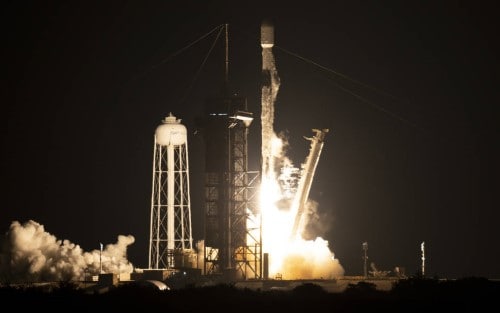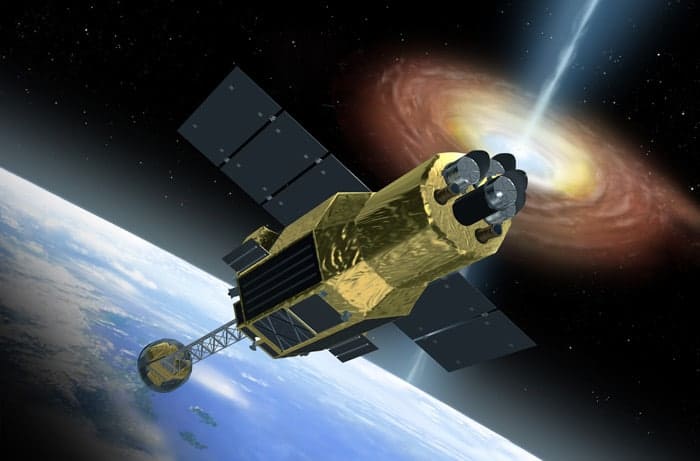
NASA has launched a mission to measure the X-ray polarization from the most extreme and mysterious objects in the universe. The $188m Imaging X-ray Polarimetry Explorer (IXPE) was launched today from the Kennedy Space Center at 01:00 local time aboard a Falcon 9 rocket. During the probe’s two-year mission, it will study several astrophysical phenomena including black holes, active galactic nuclei, quasars, pulsars and supernova remnants.
Following a successful launch and separation, IXPE is now in orbit around the equator at an altitude of around 600 km above Earth. This particular orbit will minimize the X-ray instrument’s exposure to radiation in the South Atlantic Anomaly, the region where the inner Van Allen radiation belt comes closest to Earth’s surface.
The mission contains three identical telescopes, which are able to operate independently and that each have polarization-sensitive detectors. The craft will use these to provide simultaneous spectral, spatial and temporal measurements of cosmic sources, with scientists aiming to improve the polarization sensitivity by two orders of magnitude over the X-ray polarimeter aboard the Orbiting Solar Observatory OSO-8, which was launched in 1975.
Astronomers hope this will allow them to determine the geometry and the emission mechanism of active galactic nuclei and microquasars as well as find the magnetic field configuration in magnetars.
It is an indescribable feeling to see something you’ve worked on for decades become real and launch into space
Martin Weisskopf
“IXPE represents another extraordinary first,” says Thomas Zurbuchen, associate administrator for NASA’s science mission directorate. “IXPE is going to show us the violent universe around us – such as exploding stars and the black holes at the centre of galaxies – in ways we’ve never been able to see it. [It] will shape our understanding of the universe for years to come.” Japanese X-ray observatory launches
Developed by NASA’s Small Explorer programme, IXPE is a collaboration between NASA and the Italian Space Agency and was selected in January 2017 with a launch date in May 2021. However, that was delayed due to the impact of the COVID-19 pandemic.
“It is an indescribable feeling to see something you’ve worked on for decades become real and launch into space,” says IXPE’s principal investigator Martin Weisskopf, who helped to conceive and build the spacecraft. “This is just the beginning for IXPE. We have much work ahead.”



